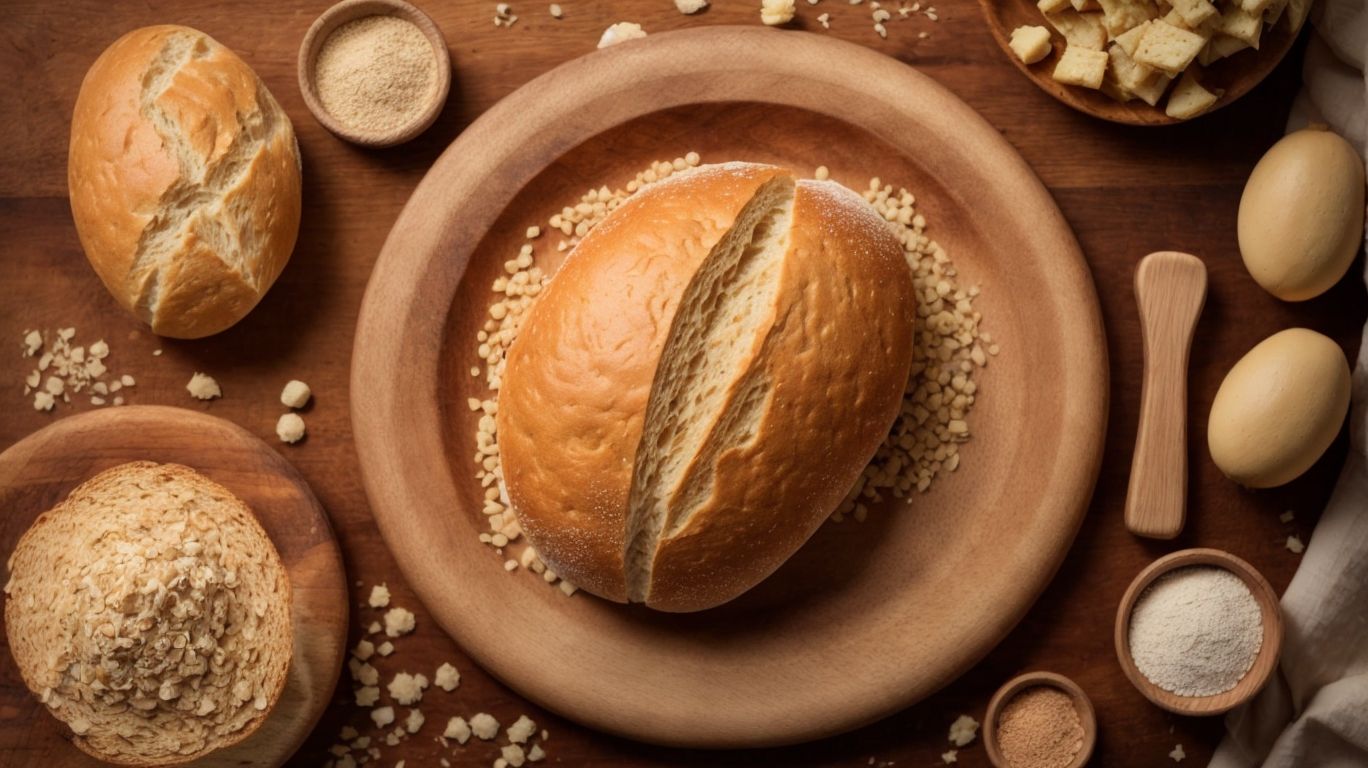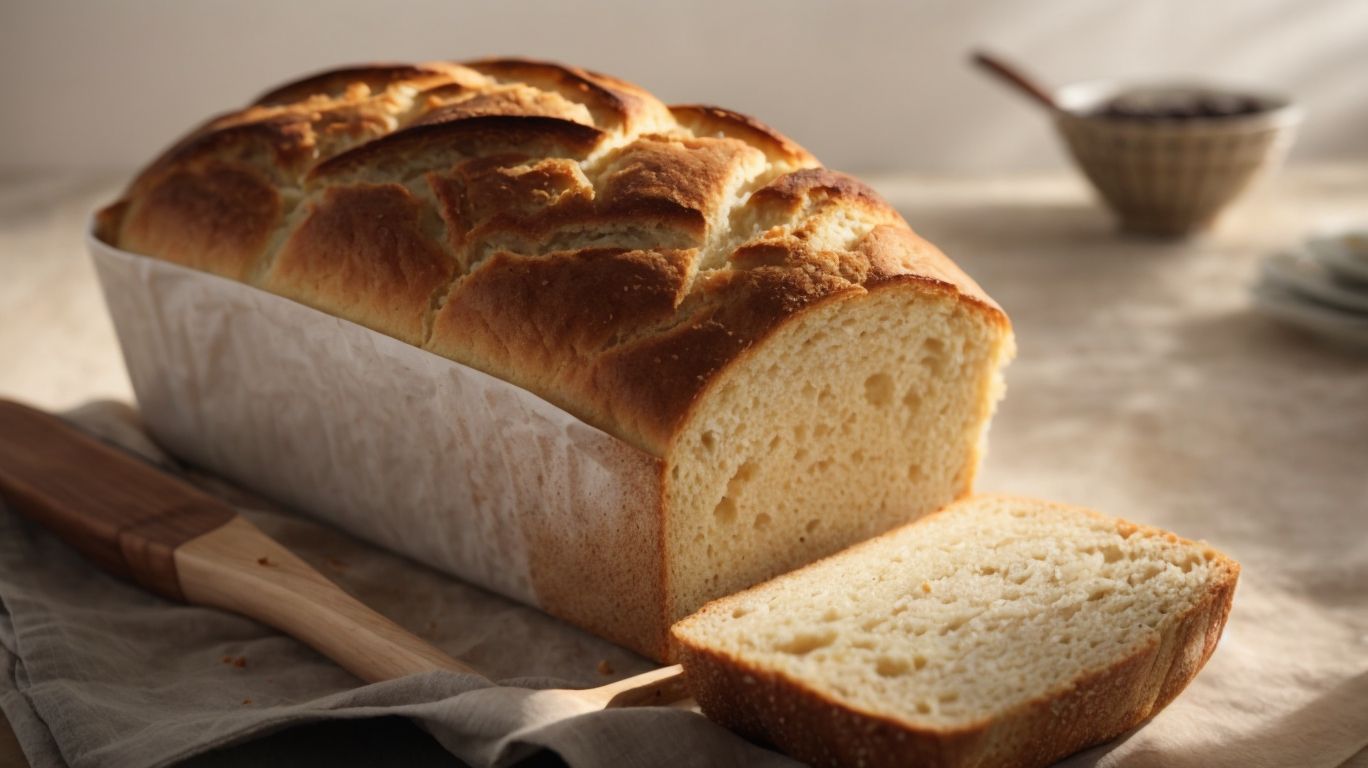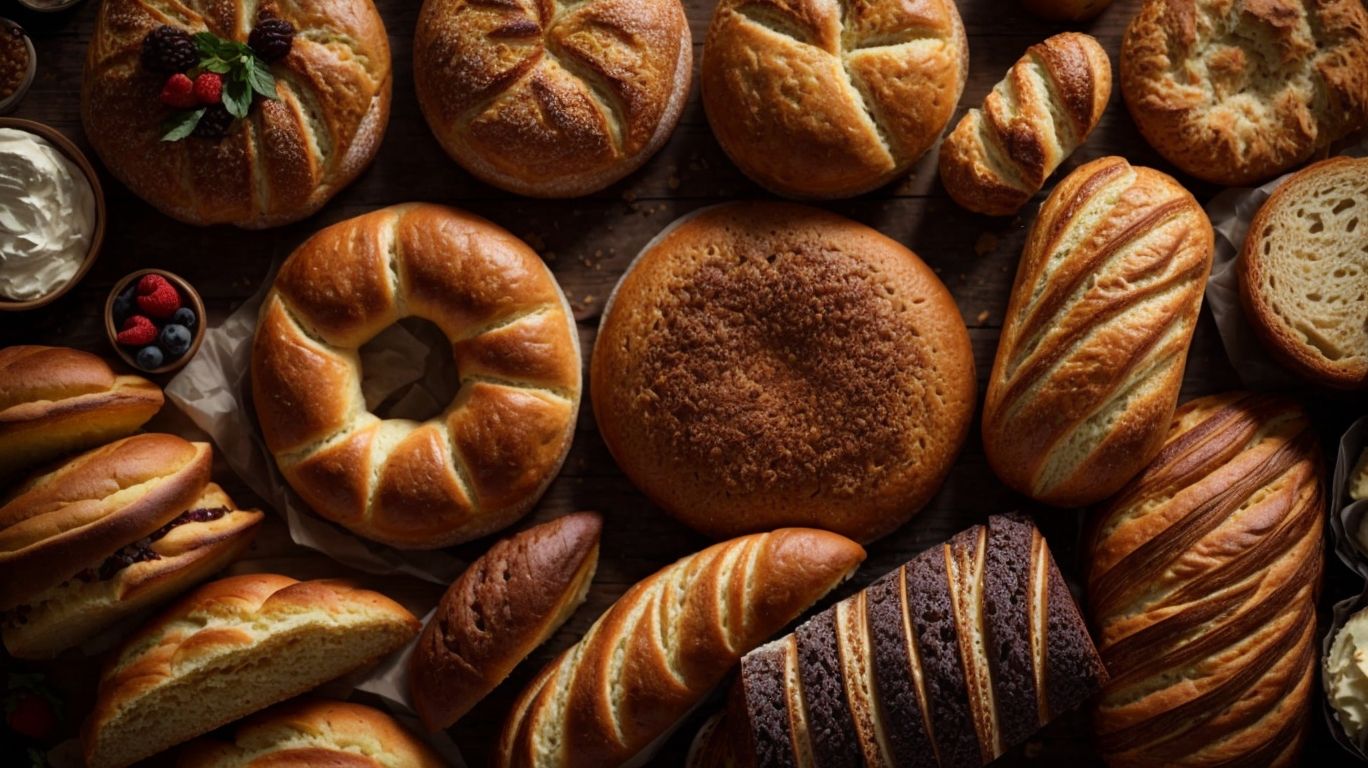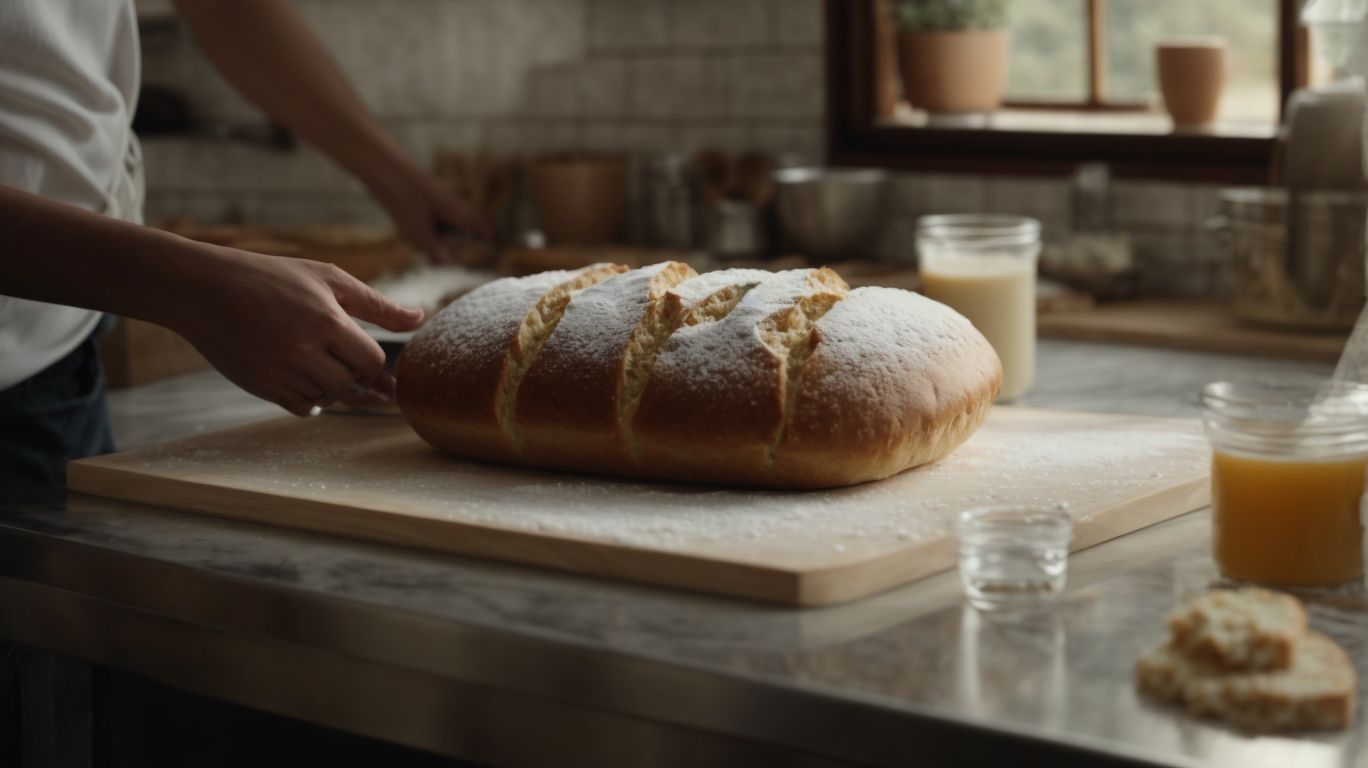How to Bake Without Yeast?
Do you love to bake but want to avoid using yeast in your recipes?
We explore the different types of yeast used in baking and why some people choose to bake without it.
Discover various methods for baking without yeast, like using baking powder, sour milk, or natural leaveners like yogurt.
Learn about the benefits of baking without yeast and common mistakes to avoid.
Stay tuned for some delicious yeast-free recipes to try at home!
Key Takeaways:
What is Yeast and Why Avoid it in Baking?

Credits: Poormet.Com – Benjamin Rivera
Yeast is a crucial ingredient in baking that helps dough rise by converting sugars into carbon dioxide gas, creating fluffy and airy bread. Understanding yeast and its alternatives is essential for those looking to explore baking without this traditional leavening agent.
Yeast plays a vital role in the fermentation process, where it interacts with the sugars present in the dough, producing alcohol and carbon dioxide. This carbon dioxide gas gets trapped within the gluten structure of the dough, causing it to expand and rise during baking, resulting in the light and soft texture we associate with bread.
For those opting to avoid yeast in their recipes, reasons vary. Some may have dietary restrictions that prevent them from consuming yeast, while others might prefer the taste or texture of bread made without it. Individuals following specific diets like the paleo or candida diet may choose yeast-free recipes to align with their nutritional requirements.
What are the Types of Yeast Used in Baking?
In baking, there are primarily two types of yeast commonly used: active dry yeast and instant yeast. Active dry yeast requires proofing in warm water, while instant yeast can be added directly to dry ingredients for immediate use.
Active dry yeast is known for its longevity and stability, making it a favorite among many bakers. It has larger granules and a longer shelf life compared to instant yeast.
On the other hand, instant yeast is a faster-acting yeast that does not require proofing, cutting down on the overall baking time. When activated, both yeasts feed on the sugars in the dough, producing carbon dioxide gas through the fermentation process, which allows the bread to rise and develop a light, airy texture.
How to Bake Without Yeast?
Baking without yeast opens up a world of possibilities for creating delicious bread and baked goods using alternative leavening agents like baking powder, baking soda, and other natural fermenting agents.
One popular method for baking without yeast involves utilizing a combination of milk and flour, creating a rich and tender crumb in the final product. By replacing yeast with these ingredients, you can achieve similar texture and flavor profiles in your recipes, whether you are making a fluffy loaf of bread or decadent pastries.
Experimenting with different flours and recipe variations can lead to diverse outcomes. For instance, combining whole wheat flour with buttermilk can result in a hearty, slightly tangy bread, perfect for accompanying soups or salads.
Using Baking Powder and Baking Soda
One common method of baking without yeast is by utilizing baking powder and baking soda as leavening agents, resulting in quick bread options that do not require rising time.
When incorporating baking powder and baking soda in your bread recipes, it is crucial to understand their roles in leavening. Baking powder is a combination of an acid and a base, while baking soda requires an acid ingredient to activate its leavening properties. To ensure proper leavening, it is essential to mix the ingredients accurately, typically combining the dry and wet ingredients separately before gently folding them together to avoid overmixing.
When baking without yeast, it is essential to pay attention to the baking time and temperature. Quick breads made with baking powder and baking soda tend to rise quickly in the oven, so it is important to preheat the oven properly and avoid opening the oven door frequently to check on the bread. This will help maintain a consistent temperature for even baking and proper rise, resulting in a delicious loaf of bread without the need for yeast.
Using Sour Milk or Buttermilk
Another approach to baking without yeast involves using sour milk or buttermilk, which provide acidity that interacts with baking soda to create the necessary lift in the dough, reducing the need for extensive kneading.
When sour milk or buttermilk is combined with baking soda, a chemical reaction occurs, releasing carbon dioxide gas that helps the bread rise without the need for yeast.
The acidity of the sour milk also contributes to the overall flavor profile of the bread, imparting a subtle tanginess that complements various types of bread recipes.
The presence of lactic acid in sour milk softens the gluten in the dough, making it easier to work with during the kneading process.
Using Natural Leaveners like Yogurt or Kefir
Natural leaveners such as yogurt or kefir can be employed in baking to promote dough rising without the need for yeast, imparting unique flavors and textures to the final loaf.
When using yogurt or kefir in bread making, the live cultures present in these dairy products help initiate the fermentation process, which generates carbon dioxide gas that causes the dough to rise naturally. This rise may take longer compared to yeast-based bread, but the result often boasts a more complex and tangy flavor profile.
The presence of natural leaveners not only enhances the taste but also influences the texture of the bread, creating a moist and slightly dense crumb that many find appealing.
Using Beer or Carbonated Water
Beer or carbonated water can serve as effective substitutes for yeast in certain bread recipes, providing carbonation that helps create a desirable crust and texture in the baked goods.
When beer or carbonated water are used as leavening agents in yeast-free baking, the carbonation released during the baking process reacts with other ingredients, resulting in a lighter and airier texture. This helps in achieving a crust that is crispy on the outside while maintaining a soft and tender crumb inside. The flavors from the beer or carbonated water can add a unique taste profile to the bread, enhancing its overall appeal and aroma.
Using Self-Rising Flour
Self-rising flour is a convenient option for baking without yeast, as it contains baking powder and salt already mixed in, simplifying the bread-making process and eliminating the need for additional leavening agents.
When using self-rising flour in yeast-free bread recipes, the pre-mixed leavening agents ensure that the bread will rise properly during baking. This can be particularly beneficial for those who want to save time in the kitchen or are new to baking. Self-rising flour can provide a consistent rise and flavor to the bread, making it a reliable choice for homemade loaves.
What are the Benefits of Baking Without Yeast?

Credits: Poormet.Com – Bobby White
Baking without yeast offers numerous advantages, including healthier bread options, quicker preparation times, and the opportunity to experiment with a wide range of quick bread recipes.
One of the key benefits of yeast-free baking is its contribution to a healthier lifestyle. By omitting yeast, you reduce the risk of potential digestive issues for those sensitive to it. Yeast-free recipes often use alternative flours and ingredients that are more nutritious. This type of baking also saves time as it eliminates the need for proofing, waiting for dough to rise, and kneading. This time-efficient approach makes it ideal for those with busy schedules who still crave fresh, homemade bread. Yeast-free baking opens up a world of possibilities, allowing you to explore a myriad of unique and flavorful quick bread recipes that cater to various dietary preferences and restrictions.
Healthier Option
Opting for yeast-free bread can be a healthier choice as it allows for control over the ingredients used, reducing additives and preservatives commonly found in commercial bread products.
By choosing yeast-free bread, individuals can have a better understanding of the ingredients that go into their daily bread consumption. This heightened awareness fosters a sense of give the power toment in creating a more tailored diet, especially for those who are sensitive to yeast or looking to minimize their intake. Opting for yeast-free options opens up the possibility of experimenting with different flours, seeds, and nuts, enhancing the nutritional profile of the homemade bread. These healthier alternatives can also be a great way to foster creativity and a deeper appreciation for the art of bread making.
Saves Time and Money
Baking without yeast can save both time and money, as it eliminates the need for lengthy rising processes and costly yeast purchases, making bread-making more accessible and affordable.
When using alternative leavening agents like baking powder or baking soda, the waiting time for dough to rise is significantly reduced, allowing for quicker baking sessions. This time efficiency is particularly beneficial for those with busy schedules who still want to enjoy freshly baked goods.
Plus saving time, opting for yeast-free recipes can also lead to considerable cost savings. Yeast can be expensive, especially for frequent bakers, but alternative leavening ingredients are typically more affordable and readily available. This shift in ingredients not only saves money but also opens up a world of experimentation with different flavor profiles and textures.
Can Be Easier for Beginners
Yeast-free baking can be a simpler starting point for beginners in the kitchen, providing straightforward recipes and techniques that do not rely on the complexities of yeast handling and proofing.
When looking into yeast-free baking, individuals often find a more forgiving and less intimidating environment to kickstart their culinary journey. Clear instructions paired with simple ingredients make it incredibly accessible for those who are new to the world of baking. By sidestepping the finicky nature of yeast, bakers can focus on mastering basic techniques without the added pressure of working with live cultures. This approach not only streamlines the process but also instills confidence in novices, allowing them to experiment and cultivate their skills with each successful creation.
What are the Common Mistakes to Avoid When Baking Without Yeast?
When baking without yeast, it’s crucial to avoid common mistakes such as using insufficient leavening agents, overmixing the batter or dough, and working with expired or inactive ingredients.
Inadequate leavening agents can lead to flat, dense baked goods that lack the desired rise and texture. Careful attention to the type and amount of leavening agent used is essential for successful yeast-free baking.
Improper mixing techniques, such as excessive stirring or mixing for too long, can result in tough or dry final products. Incorporating proper mixing methods ensures even distribution of ingredients without overworking the batter.
Using expired or inactive ingredients can compromise the flavor, texture, and overall quality of the baked goods, emphasizing the importance of using fresh, high-quality ingredients.
Not Using Enough Leavening Agent
One common mistake when baking without yeast is not using a sufficient amount of leavening agent, which can result in dense and poorly risen bread.
Exploring alternative yeast substitutes and proper flour ratios is key to addressing this issue.
- Yeast substitutes like baking powder, baking soda, and cream of tartar can all play a crucial role in helping bread dough rise adequately.
- It’s important to understand that different flours have varying levels of protein content, affecting the overall structure and texture of the bread.
- When selecting the right flour for a yeast-free recipe, opt for options like all-purpose flour, whole wheat flour, or rye flour, which provide enough gluten development for proper leavening.
- By incorporating the appropriate leavening agents and flour types, you can achieve optimal leavening for successful bread outcomes, resulting in light and fluffy loaves every time.
Overmixing the Batter or Dough
Overmixing the batter or dough can lead to tough and chewy bread textures, as excessive mixing can interfere with gluten development and affect the final crumb structure of the loaf. Understanding proper mixing techniques is essential to avoid this common pitfall.
When the batter is overmixed, the gluten network becomes tough and tight, making it difficult for the bread to rise properly during baking. This can result in a dense and heavy loaf instead of the light and airy texture desired in real bread. To prevent this, it’s important to mix the dough until just combined and smooth, without overworking it. Gentle folding and kneading techniques can help develop the gluten structure without overmixing, ensuring a tender crumb and a perfect rise.
Using Expired or Inactive Ingredients
Utilizing expired or inactive ingredients in yeast-free baking can compromise the quality and taste of the bread, emphasizing the importance of proper ingredient storage, freshness, and quality assessment before starting the baking process.
Stale or expired ingredients can significantly alter the texture and flavor of your baked goods. For instance, using old baking powder or soda may lead to flat, dense bread instead of the desired light and fluffy texture.
To avoid such mishaps, it is crucial to meticulously check the expiration dates on all your baking ingredients like flour, sugar, and leavening agents. Proper ingredient storage is equally vital in maintaining ingredient freshness. Storing ingredients in airtight containers away from moisture and heat helps prolong their shelf life and ensures optimal baking results.
What are Some Delicious Recipes for Baking Without Yeast?

Credits: Poormet.Com – Matthew Nelson
Exploring yeast-free baking opens the door to a variety of delightful recipes, from savory no-yeast pizza dough to sweet yeast-free cinnamon rolls and classic soda bread variations.
Creating flavorful yeast-free homemade treats can be a satisfying experience. For a scrumptious no-yeast pizza dough, all you need is flour, baking powder, salt, and water. Mix the ingredients to form a smooth dough, then roll it out and add your favorite toppings.
In terms of yeast-free cinnamon rolls, a mixture of flour, baking powder, sugar, salt, and milk creates a soft and sweet dough. Spread a filling of butter, sugar, and cinnamon, roll it up, slice, and bake until golden and fragrant.
For a traditional soda bread, combine flour, baking soda, salt, and buttermilk for a quick and easy loaf that pairs perfectly with soups or spreads. These yeast-free recipes are not only delicious but also perfect for those wanting to explore the world of baking without yeast.
No-Yeast Pizza Dough
Crafting a flavorful no-yeast pizza dough allows you to enjoy homemade pizza without the wait, offering a quick and convenient alternative that can be customized with your favorite toppings and sauces.
To create this simple yet delicious pizza dough, you will need 2 cups of all-purpose flour, 1 tablespoon of baking powder, 1/2 teaspoon of salt, 2/3 cup of water, and 1/4 cup of olive oil.
Begin by preheating your oven to 425°F (220°C). In a mixing bowl, combine the flour, baking powder, and salt, then gradually add the water and olive oil. Knead the dough until it forms a smooth ball. Roll it out on a baking sheet, add your desired toppings, and bake for 15-20 minutes, or until the crust is golden brown and crispy.
Yeast-Free Cinnamon Rolls
Indulge in the sweet and aromatic flavors of yeast-free cinnamon rolls, a delightful treat that can be baked to perfection in a loaf pan, offering a comforting and satisfying experience for cinnamon lovers.
These delectable cinnamon rolls provide a perfect solution for those who crave the cozy flavors of cinnamon without the need for yeast. The absence of yeast results in a quicker preparation time, making them an excellent choice for a spontaneous baking session. Real bread enthusiasts can relish the soft and pillowy texture of these rolls, which are just as delicious as their yeast-based counterparts. With simple ingredients and basic kitchen tools, these rolls can be easily whipped up and popped into the oven, filling your home with the irresistible scent of cinnamon.
Soda Bread
Experience the rustic charm of soda bread, a traditional favorite like the classic Irish Soda Bread, which requires no yeast and can be easily prepared in the oven for a warm and inviting loaf that pairs perfectly with soups and stews.
Irish Soda Bread, known for its signature cross cut on the top, is a staple in many households, originating from the humble ingredients of flour, baking soda, salt, and buttermilk.
To achieve that coveted crispy crust, preheat the oven well before baking and place a pan of water on the bottom shelf for steam during the process.
The versatility of soda bread allows for various additions like raisins, nuts, or seeds, enhancing its flavor and texture.
Once out of the oven, the aroma of freshly baked bread fills the kitchen, inviting everyone to gather around for a slice slathered generously with butter.
Banana Bread
Savor the delightful flavors of banana bread, a classic favorite that can be baked in a loaf pan or transformed into individual muffins using a muffin tin, providing a moist and flavorful treat for any occasion.
When preparing this beloved treat, be sure to gather ripe bananas, all-purpose flour, baking soda, salt, eggs, sugar, and butter for a truly indulgent taste experience. The process of making banana bread involves mashing the ripe bananas into a smooth mixture, then combining them with the dry ingredients until just incorporated. Whether you opt for the traditional loaf pan for a real bread experience or the muffin tin for convenient individual servings, the result is always a delectable creation that pairs perfectly with a cup of coffee or as a snack throughout the day!
Lemon Blueberry Scones
Delight in the citrusy zing of lemon blueberry scones, a delightful treat that combines the tartness of fresh blueberries and the zest of lemon in a comforting and satisfying baked good, perfect for a cozy breakfast or afternoon snack.
These scones are a delightful blend of sweet and tangy flavors, creating a perfect harmony that appeals to even the most discerning palates. The texture of these scones strikes the ideal balance between crumbly and moist, providing a satisfying bite with every mouthful. To create these mouthwatering treats, gather ingredients like fresh blueberries, zesty lemons, creamy buttermilk, and flour to form a dough that bakes into golden perfection. Serve these fresh-baked carbs warm with a dollop of clotted cream and a pot of steaming tea for a true taste of comfort food heaven.
Frequently Asked Questions
Can I bake bread without yeast?
Yes, you can! There are multiple alternatives to using yeast in bread baking, such as using baking powder, sourdough starter, or even beer.
How can I make pizza dough without yeast?
You can make pizza dough without yeast by using self-rising flour, Greek yogurt, or a combination of baking soda and lemon juice. Each method will result in a slightly different texture, so choose the one that best fits your preferences.
What can I use instead of yeast in bread?
Aside from the alternatives mentioned above, you can also use baking soda, baking powder, or even eggs as leavening agents in bread baking. Each substitution will result in a different type of bread, so experiment to find your favorite.
Can I still achieve a rise in my bread without yeast?
Yes, there are ways to achieve a rise in bread without yeast. You can try using tangzhong, a technique that involves cooking a portion of flour and liquid together to create a gel-like mixture that will help the bread rise. Another option is to use steam in the oven during baking, which will create a humid environment and help the dough expand.
How do I make sourdough starter for bread baking?
To make a sourdough starter, combine equal parts flour and water and let it sit at room temperature for several days, feeding it daily with more flour and water. Once it becomes bubbly and active, it can be used as a leavening agent in bread baking.
What is the best type of flour to use when baking without yeast?
The best type of flour to use when baking without yeast will depend on the recipe and the alternative leavening agent being used. Generally, self-rising flour or all-purpose flour will work well, but for certain recipes like sourdough bread, you may need to use bread flour. Experiment with different types of flour to find the one that works best for your desired result.

